People: a flea market with Hanz Gueco
He's a Paris-based chef and artist, he knows how to flea market and oh yes, he knows how to gazpacho
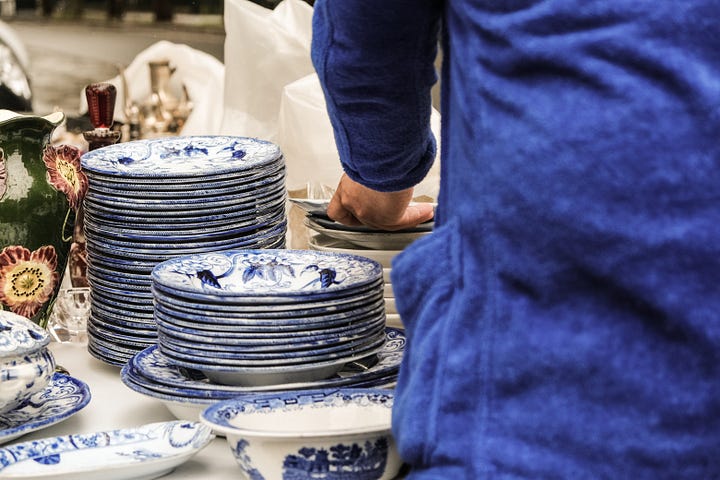
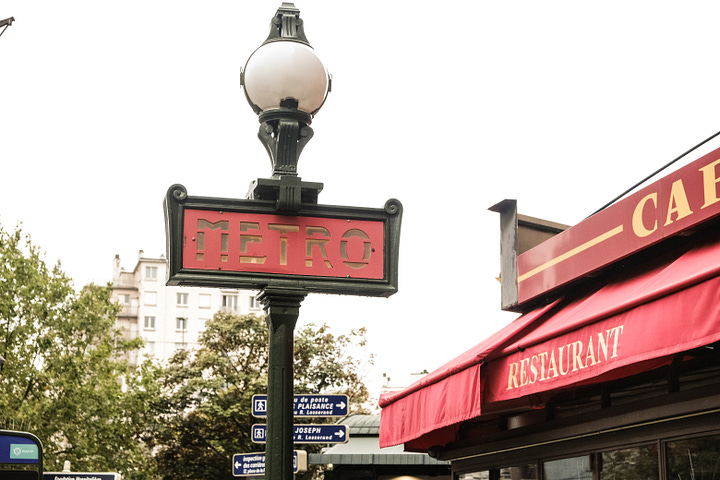
It’s a Saturday morning in Paris, it’s the middle of France’s summer vacation and it’s raining. Hanz is concerned that there won’t be much happening at the flea market. He’s opening a restaurant on Thursday, well soft opening, but yes, opening, and he kindly has me along to his flea market forage where he’s hunting for pieces for the new space. It quickly becomes apparent that Hanz is no foreigner to a flea — perhaps due to his lockdown days buying and selling at flea markets for a bit of extra cash, or perhaps thanks to Benedict Butterwroth, an English chef Hanz once worked with, who would go straight from the kitchen, to a night out, to a flea. La belle vie.
I start to visualise a group of chefs, perhaps a little tipsy, pottering about a flea market, a cigarette and espresso held nimbly in one hand to keep the other free to fondle treasures spread across tables. Hanz breaks my little day dream with a little flea market wisdom: “The more organised the table, the more expensive the things.”
We chat as we weave and wander, Hanz picking up mostly blue and white pieces of china, or an occasional silver platter. Sometimes the chat is about food, about the restaurant he’s soon to open, or sometimes it’s about how he might paint over his tiger wallpaper in his Paris apartment with an “ugly shade of green”. The green reminds me of a shiso mayonnaise I’d made a few weeks back. The Parisian apartment look that’s all mirrors and marble isn’t quite him.




We talk about the history of Chinoiserie in Europe, and as we anxiously pick up an incredibly dainty china cup, Hanz talks about the beauty and mindfulness of dining with pieces like this — it requires dining with a certain level of attention and care, of time and a gentle respect. The truth.
Why the hunt for blue and white china? The space Hanz has taken over, along with three friends, has been run as a Chinese restaurant since opening in Paris’ Belleville 36 years ago — Cheval d’Or. Each of the four behind the restaurant — Hanz, Cris, Nadim, Luishave — have moved to Paris from different parts of the world, so Hanz says that in a lot of ways, it’s an immigrant restaurant, with immigrant-style food. “Think [Sydney’s] Mr. Wong meets Bistrot Paul Bert,” he says. A menu of dishes inspired by what may have been served when Cheval d’Or opened its doors in 1987, mixed with a touch of French-bistro, and yes, a good touch of Hanz.
The coming together of four friends to open a place to welcome the people of Paris with an emphasis on hanging on to the heritage of the space while embracing the food of the country they now all call home. The power of food, it’s really quite lovely.
Hanz started cooking in his home city of Sydney, working in a good handful of the city’s institutions: Marque, Rockpool, Cafe Paci, Est. He went on to cook around the world with stints in Stockholm, Tokyo, Singapore, London, California, probably others. He landed in Paris 7 years ago where he’s been cooking ever since, first at now-closed Saturn and most recently, at Verjus.
When Hanz isn’t cooking, he very well may still be playing with vegetables. You see, he’s also an artist, and builds these incredible paper vegetable sculptures. Have a peruse through his Instagram, but two of my favourites are his bundle of white asparagus and his baby leeks.
I find it thrilling how wildly malleable a life in food can be. This idea of moving between disciplines, but with food being at the core, is fascinating. Perhaps using beauty and pleasure — whether it be in a dish, or in a piece of art that startles — to drive people towards something, like being more connected to your vegetables, maybe even subconsciously. To me, Hanz really represents that, working between art and cooking. You can feel Hanz’s artistic sensibility through his dishes — they’re fun, they’re playful, they’re creative and, to me, they’re very unique to how he sees the world. They’re also pure joy to eat.
I’ve had many conversations this summer about what a life cooking, or a life in food, means and looks like. Traditionally, working in food has meant to be a chef that works in a restaurant kitchen. It feels to be an interesting time where young ‘culinary creatives’ are in a way rejecting this traditional trajectory and are doing things their own way, which often involves the bringing together of various creative disciplines, including cooking. Perhaps this is a control thing, people taking their careers, passions and lives into their own hands. It seems too, more and more, that people are using cooking and food to bring people together — using it as a vehicle for community, collaboration and maybe even change. Though the world is an increasingly tricky place, there seems to be a sense of empowerment amongst people to lean into their creativity and their individuality, and in turn, find a way of working in food that fits the life they want and that has meaning to them. I find that really exciting.
With Hanz’s cooking and art, it’s interesting to think about how one passion and talent feeds into another — if there’s a relationship between the two, if they create some sort of balance. Perhaps that both take hours of preparation and much skill, knowledge and joy, both are in the business of giving pleasure, but one is gone in seconds and one will be there on your shelf for years.
I think about this often: the ephemeral beauty of food, that we put so much into it — thought, time, money — for it to be gone in an instant, in a few mouthfuls. Hours of work for minutes, maybe seconds, of pleasure. I suppose though it’s not so different to sex in that way.
I recall a few pages in Judith Jones’ memoir, The Tenth Muse. Judith is, in my opinion, one of the most influential editors in the history of food writing, responsible for Julia Child’s books (she is also the reason for the publishing of Anne Frank’s Diary, finding the manuscript in a slush pile whilst working in a publishing house in Paris at the age of 27, and a hefty list of other incredible food titles). She says,
‘But what about all the time it takes?’ That’s the complaint I constantly hear — all the shopping, tracking down of special ingredients, then the cooking and washing up, for something that is devoured in a matter of minutes. Is it really worth it?’
She goes on to quote English food writer Jane Grigson regarding this as a blessing in her book Good Things:
Cooking something delicious is really much more satisfactory than painting pictures or making pottery. At least for most of us. Food has the tact to disappear, leaving room and opportunity for masterpieces to come. The mistakes don’t hang on the wall or on shelves to reproach you forever. It follows from this that the kitchen should be thought of as the centre of the house. It needs above all space for talking, playing, bringing up children, sewing, having a meal, reading, sitting, and thinking … It’s in this kind of place that good food has flourished. It’s from this secure retreat that the exploration of man’s curious relationship with food, beyond the point of nourishment, can start.
It’s interesting to think about. When you compare creating in food with creating in say, sculpture — with food, there is a lightness but at the same time a pressure. When you’re cooking, you know it won’t be around forever, that it’ll be eaten soon, that you can do better or differently next time; that it doesn’t need to be perfect. There’s a lightness to that. But, equally, you have this one meal, this one dish, this one chance to make it as you want it. And of course this is different in home cooking to cooking in a restaurant. Regardless, I find this to be one of the most beautiful aspects of food cooked with thought — that there are hours (or days, months, seasons when you think of the growers and producers behind the ingredients) behind something that will disappear in moments.
I wonder with Hanz and his art whether there’s something in that — preserving the beauty of the vegetables that he often cooks with that are gone in an instant through creating his paper sculptures. Perhaps, it’s nice to create knowing you’ll enjoy the beauty of your creation for longer than a few moments.
Back to the flea, back to the opening of his first restaurant. For Hanz, a space of his own has long been the dream, so I smile when his response to the question of whether he has cooked much Chinese food in his time is, “No, not really,” replied with much casualness, calmness, coolness. The lightness, the joy — it’s refreshing. Hanz explains that it’s the space that dictates the food, and this space came to be the one.
It was the same at his summer stint as the resident chef at Berto in Paris, Bistrot Paul Bert’s wine bar, where Hanz’s gazpacho became summer 2023 in a dish, for me, and I am quite sure for many others who popped their head into the tiny wine bar while it was in Hanz’s hands. The chilled tomato soup was served over cold as cold buckwheat noodles and topped with a basil granita. Lucky for you, lucky for me, Hanz has shared his recipe for this divinity. It’s light and bright, it’s zesty and fun, and it really is all you want to eat (and cook) come warm summer days.
Behold a delicious library of snaps of the dish:
Tomato and Melon Gazpacho, Buckwheat Noodles and Watermelon Granita
Serves four
I used melons but you can use ripe peaches, strawberries or even mangoes.
Tomato and Melon Gazpacho
1 kg heirloom tomatoes (chopped)
1 ripe melon (peeled, deseeded and chopped)
1 red onion (peeled and sliced)
3 cloves of garlic (peeled and sliced)
Half bunch tarragon (picked)
2 cucumbers (peeled, deseeded and chopped)
2 red peppers (deseeded and chopped)
100 ml olive oil
50-100 ml sherry vinegar
Salt, to taste
Mix everything together. Season to taste with salt and vinegar. It should look/taste like a juicy salad. Let it marinate in the fridge overnight. The next day blend with your most powerful blender. Strain through a fine strainer and store in the fridge. Can be made up to 3 days ahead.
250 g buckwheat noodles (preferable the ones for naengmyeon)
Boil as described on the packet. Strain and run under some cold water. Divide your gazpacho into bowls. Add your cold noodles. Top with some granita.
Watermelon Granita
500 ml fresh watermelon juice
100 g sugar
100 ml water
2 limes, zest and juice
Bring the water and sugar to a boil. Allow to cool. Add the lime juice and zest. Mix well with the watermelon juice and freeze overnight. Before you're about to serve, scratch the granita with a spoon or fork and spoon the granita over the noodles.
QUESTIONS AND ANSWERS WITH HANZ
What do you like? RESTAURANTS. Cooking in them, eating at them. Trying new ones or revisiting old favourites. I love to see how they designed the space, the menu, the restrooms. Everything!
Critical points of making a good gazpacho? It's going to sound cliché but it's all about good ingredients. If you wouldn't put it in a salad then you shouldn't put it in your gazpacho.
Most admired cooks of Chinese food? Sydney-based chef and restaurateur Dan Hong, and Fuchsia Dunlop, the English food writer and cook who has spent decades cooking and researching Chinese cuisines, particularly the fragrant food of Sichuan are two Hanz mentions over fossicking at the flea. On the list too is Jowett Yu, Victor Liong and Neil Perry.
The hardest thing about opening the new place? That you're still working when your not working.
What does breakfast look like for you these days? A double espresso.
Last thing you cooked? A few BLT sandwiches for the staff.
Last vegetable sculpture you worked on? Some vine tomatoes.
Most treasured item in your home? I made a Birkin bag out of paper Hermès shopping bags that I’m particularly proud of. A few people have offered to buy it but it's not for sale.
Where do you shop for your art supplies? Passage Clouté, 5-7 Rue des Boulets, Paris
And, currently:
A song: the last song I have liked on my phone is Nomalizto by Letta Mbulu
A (food) book: Vegetables by Jeremy Fox is my favourite cookbook released in the last couple years
A herb: Mint. Why is parsley the go to herb? Mint makes so many things instantly better
A place in Paris: Musée de la chasse et de la nature (Museum of Hunting and Nature), 62 Rue des Archives, Paris
Name: Hanz Gueco
Spends most of his time as: a chef, an artist
Place: Paris, France
IG: @hanzgueco
Merci to Hanz, for the flea forage and the fun, for the delicious and for the joy.
Do go and perch at Cheval D’Or when you’re in Paris. Hanz’s food is some of the most exciting and refreshing food you’ll find in Paris, and the team behind the restaurant is just lovely. Order the melon surprise if it’s still on the menu. And if you’re lucky, as you wander home down the hill of Rue de Belleville, the Eiffel Tower will be doing its hourly sparkle.
And merci to you for coming,
H. X

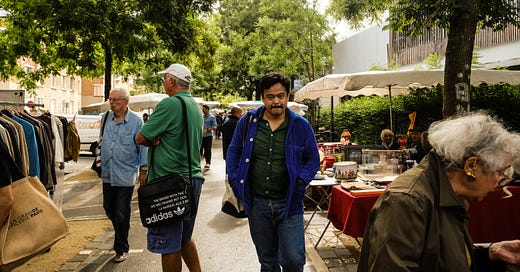







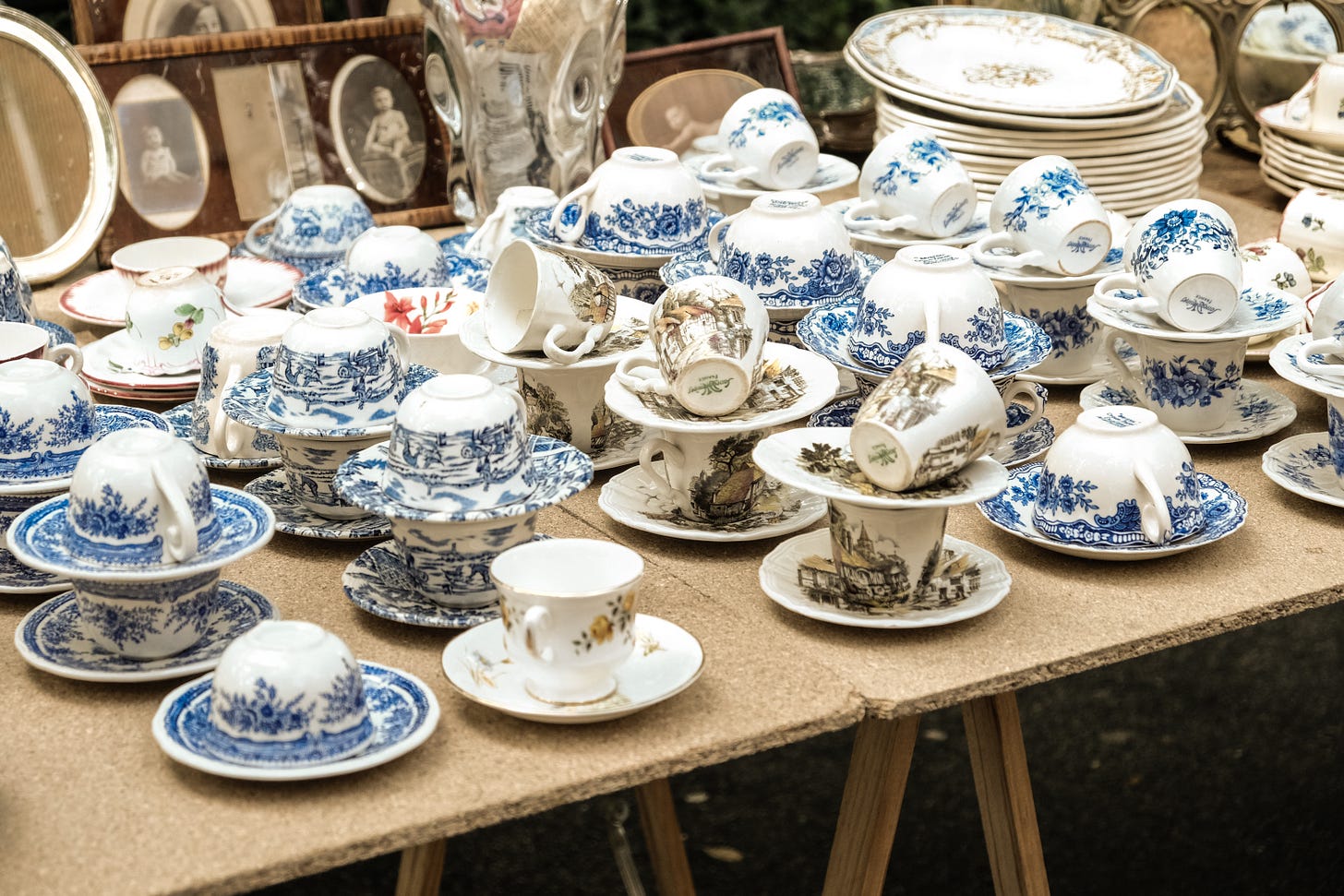


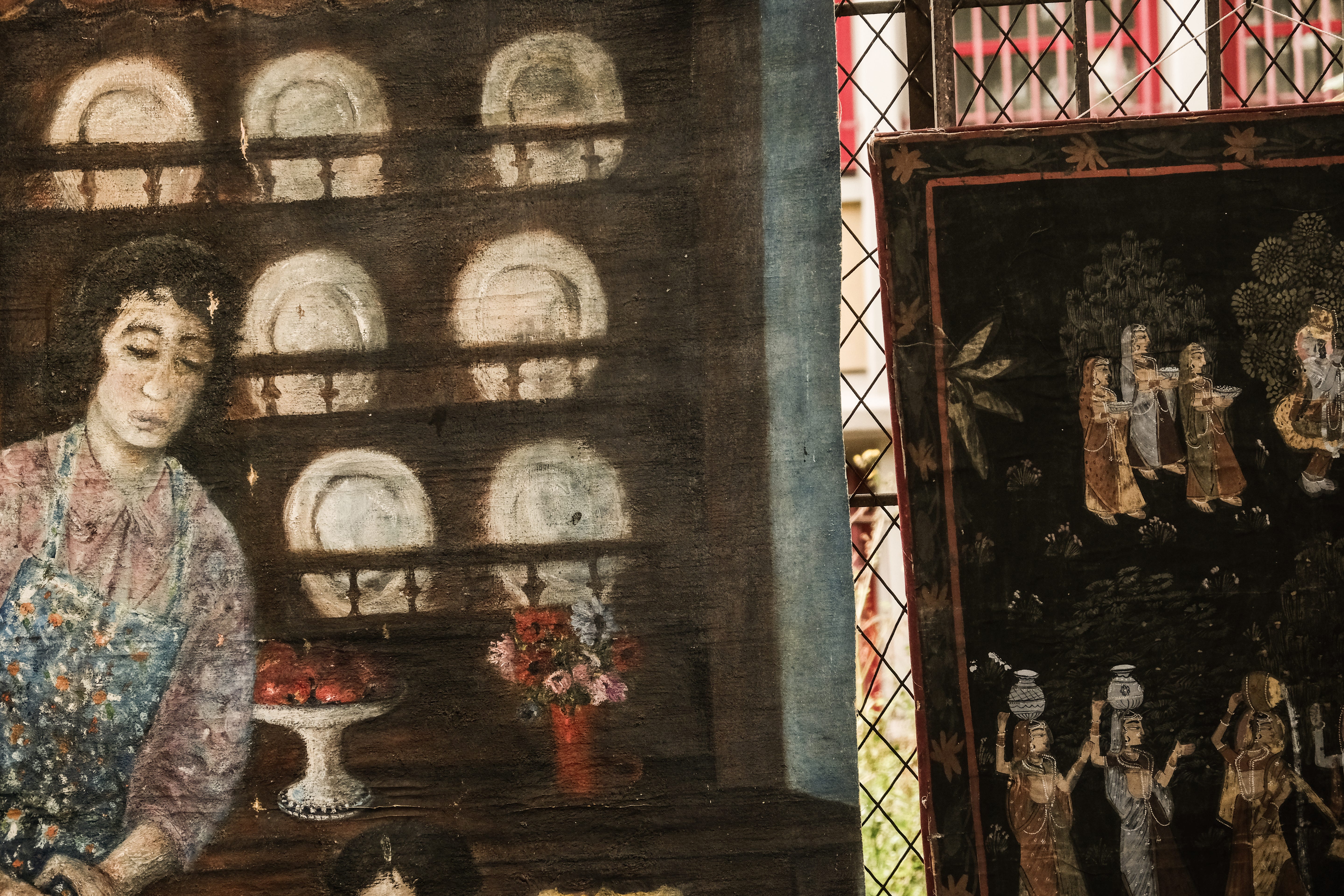
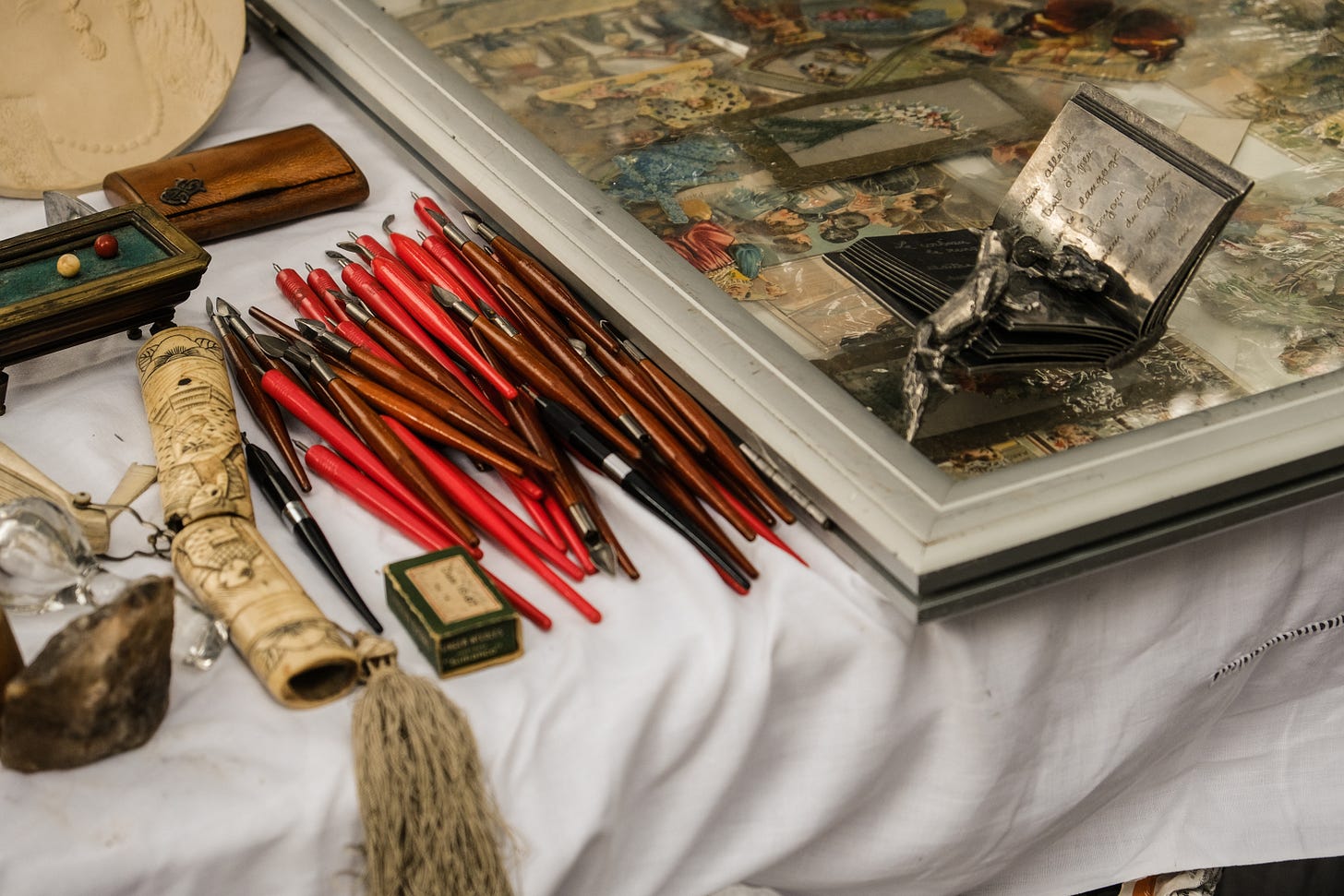
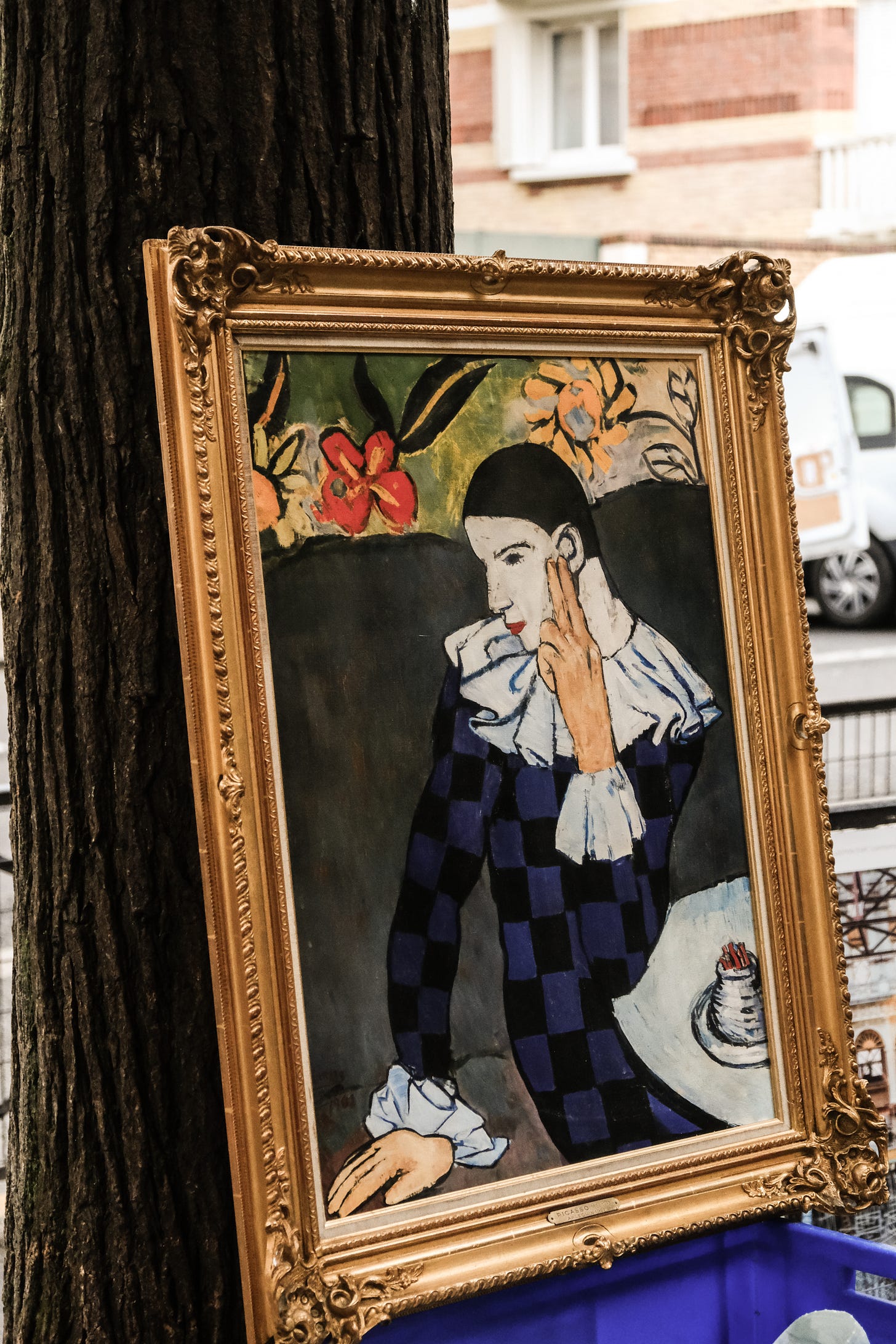




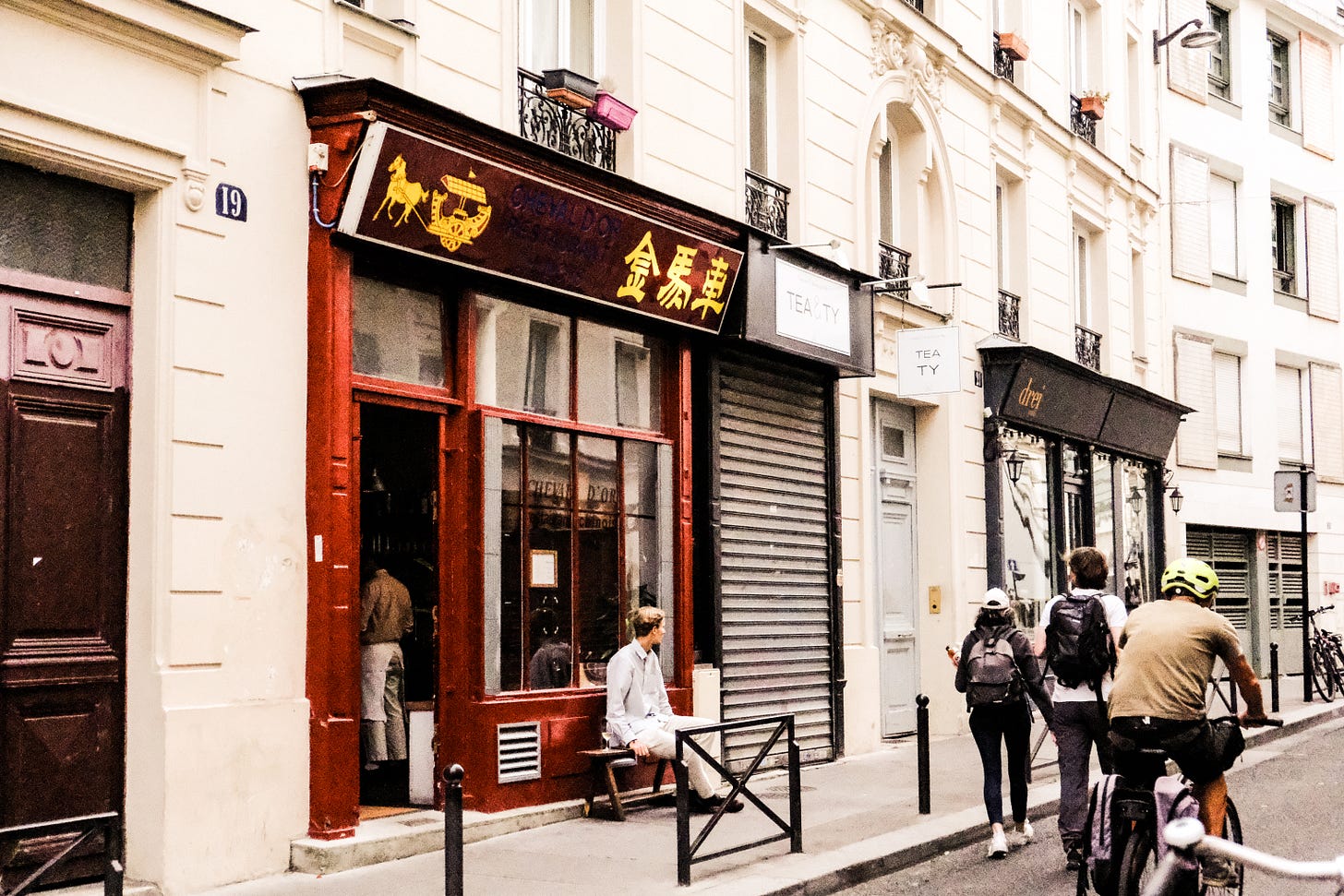

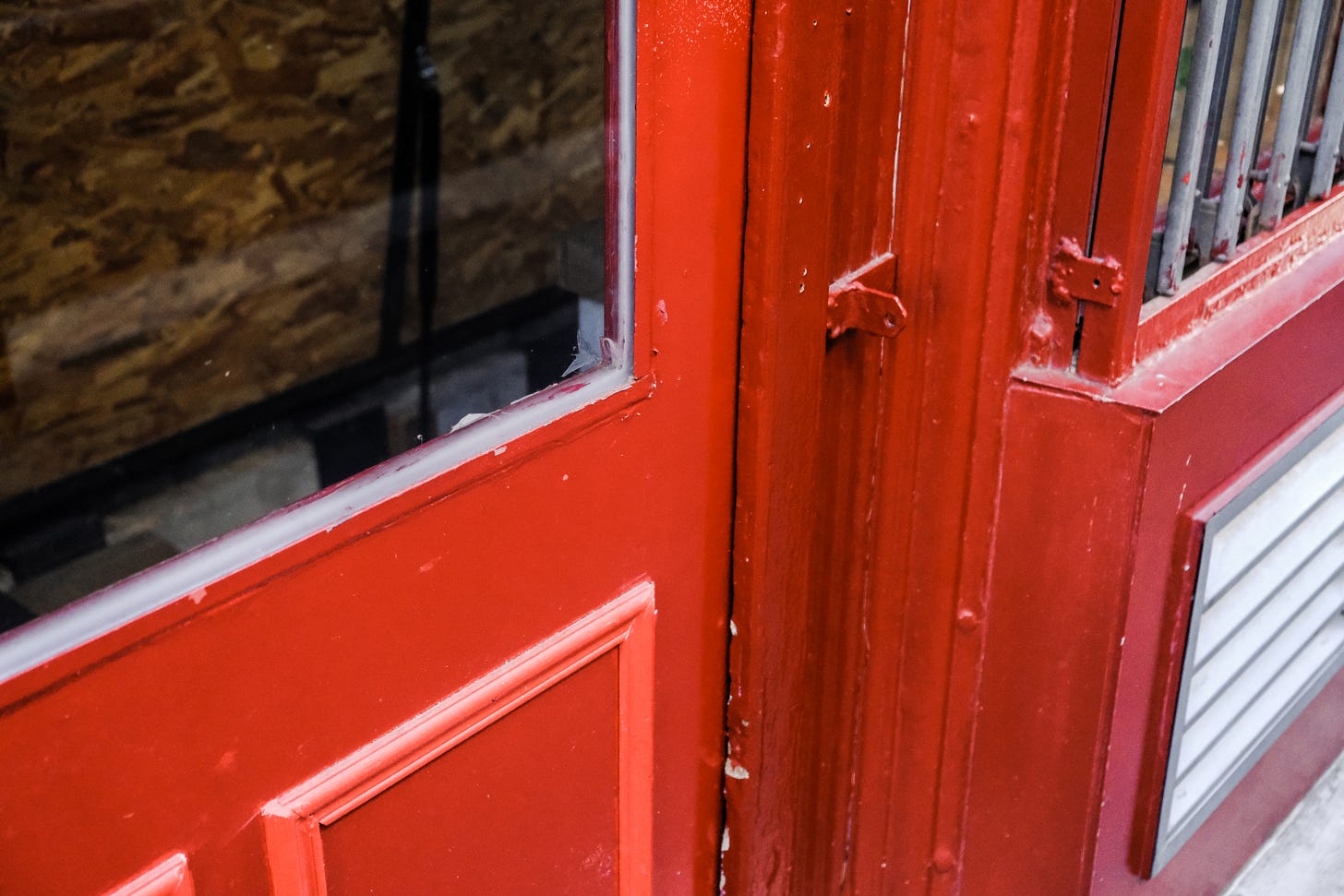
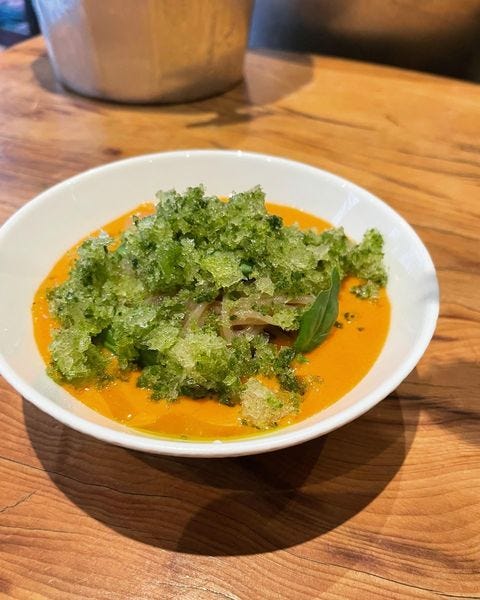

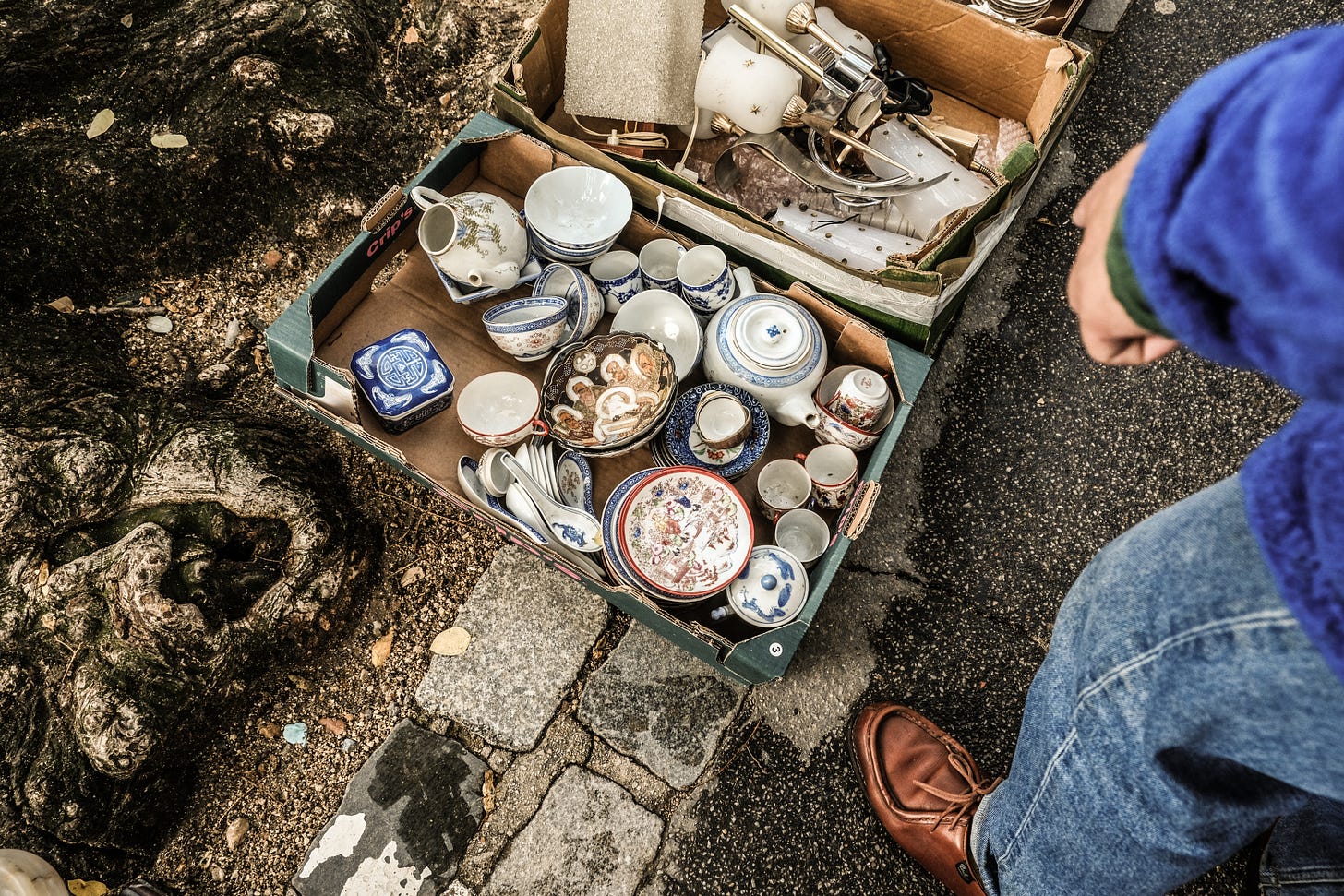

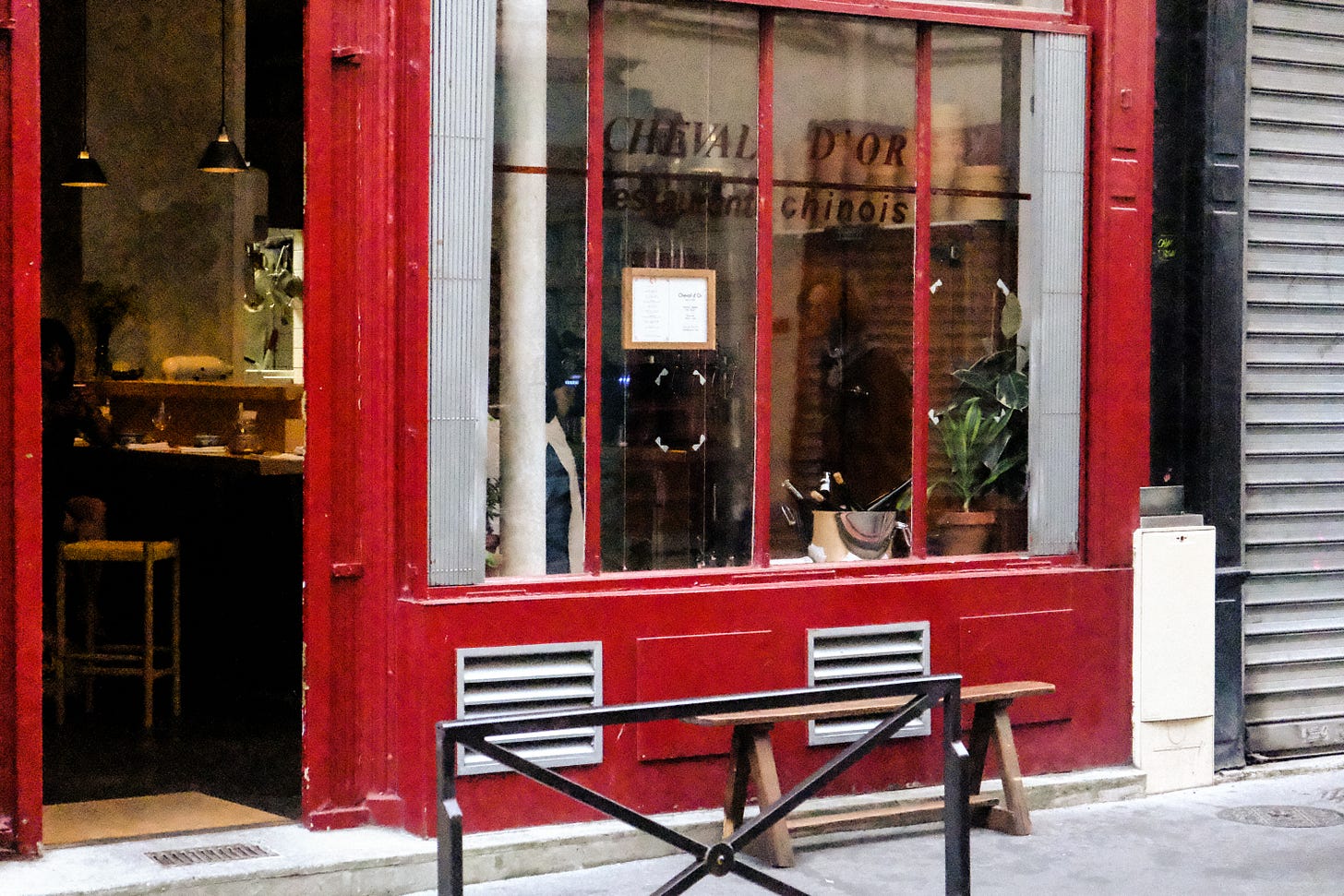
All the times I have been to Paris I have never been to a flea market. I want to go as in I really want to go. I am not sure if I am just intimidated or afraid I will buy too many things! Great read, Harriet!